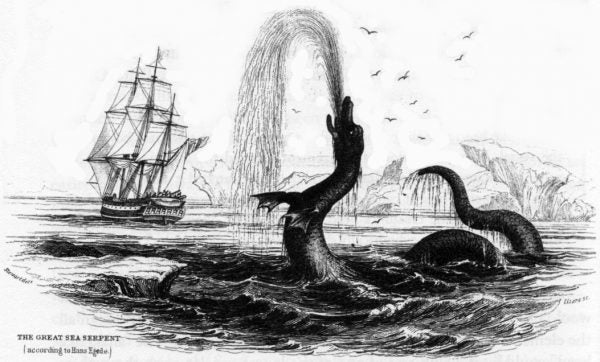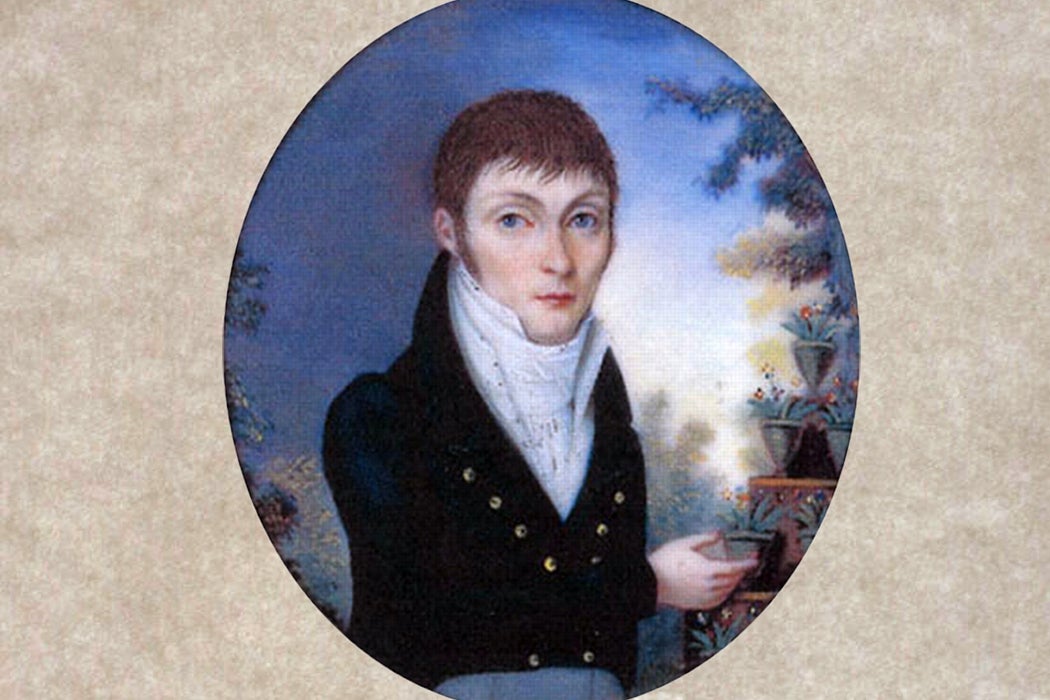Next time you’re off the coast of Gloucester, Massachusetts, keep a lookout for Megophias monstrosus, the great sea serpent. True, “Massy” doesn’t seem to exist, but you could get lucky. After all, the creature has a scientific binomial, courtesy of one Constantine Samuel Rafinesque, a name which itself sounds like an alias but isn’t.
Rafinesque, also known as Rafinesque-Schmaltz (!), was born in 1783 in what was then called Constantinople. He arrived in the United States in 1802 and became somewhat infamous as a polymath, naturalist, and botanist.
Adventuring European-born naturalists were all over North America during the early nineteenth century, as scholar Charles Boewe explains. Among these explorer-collector-publicists of North American flora and fauna, only John James Audubon remains well known today. But Rafinesque, who died in Philadelphia in 1840, was undoubtedly the most eccentric and controversial of the lot. As Boewe says, “the passion for discovery pursued him to the grave.”
Botanical researcher Daniel Mosquin calls the autodidact Rafinesque a “flawed genius.” Rafinesque published over a thousand articles and books, lending some credibility to his self-assessment that “whenever I apply myself to any thing, which I like, I never fail to succeed if depending on me alone, unless impeded and prevent[ed] by lack of means, or the hostility of the foes of mankind.”

He published on subjects as varied as Native American monuments, banking, the fishes and bivalves of the Ohio River, atmospheric dust, his Life of Travels, the pleasures and duties of wealth (he died a pauper), American grape vines, and “the whole history of the earth and mankind in the western hemisphere” in two volumes.
But Rafinesque is best known as a botanist. He named 2,700 genera—that’s more than Linnaeus, the godfather of taxonomy. Yet, as Mosquin explains, only fifty or sixty of Rafinesque’s genera are recognized today. Rafinesque was what is known in taxonomy as a “splitter,” meaning he saw variations within species as evidence of different species.
He was also one of the early users of the term “evolution” to refer to species changing over time. In 1832, he wrote, “The truth is species and perhaps Genera also, are forming in organized beings by gradual deviations of shapes, forms and organs, taking place in the lapse of time.” Standard belief held that species were immutable. And for context, in 1832, the young Charles Darwin was still exploring South America during the cruise of the HMS Beagle.
Get Our Newsletter
Rafinesque’s manic genera generation and his heretical evolutionary talk were entirely too much for the emerging botany and natural history establishment, which turned against him. His name became a byword for taxonomic sloppiness, and his obsessions for life forms perceived as monomania.
This reputation lasted well into the twentieth century. More recent historians and botanists have been kinder. Mosquin writes, “had he more creditability with his peers, his ideas on the formation of new genera and species may have invited additional exploration from other brilliant biological minds of the time, perhaps advancing the science of evolutionary biology by decades.”







